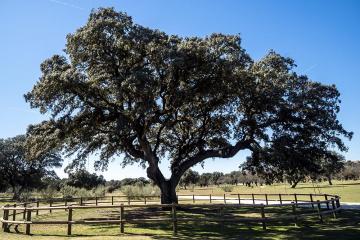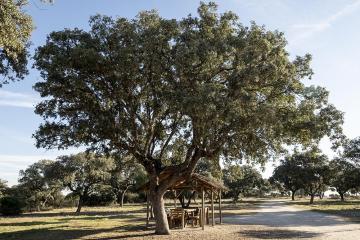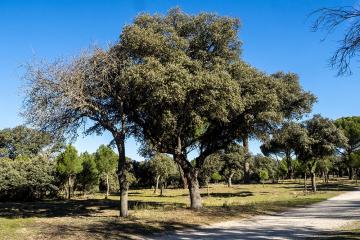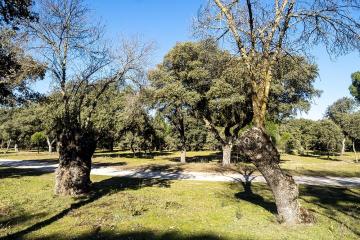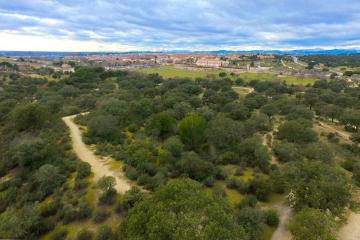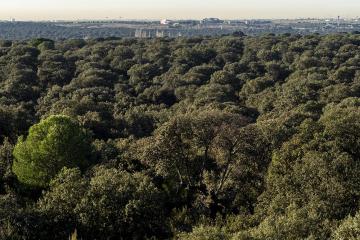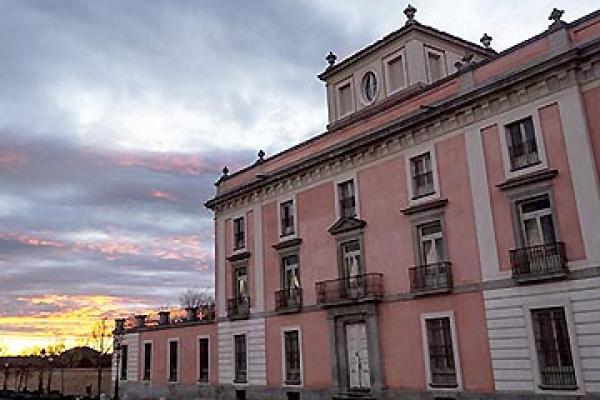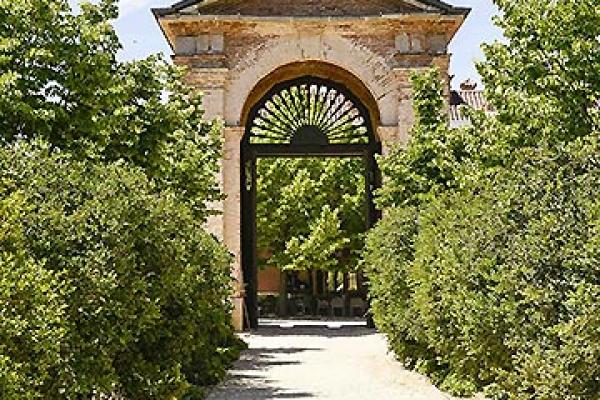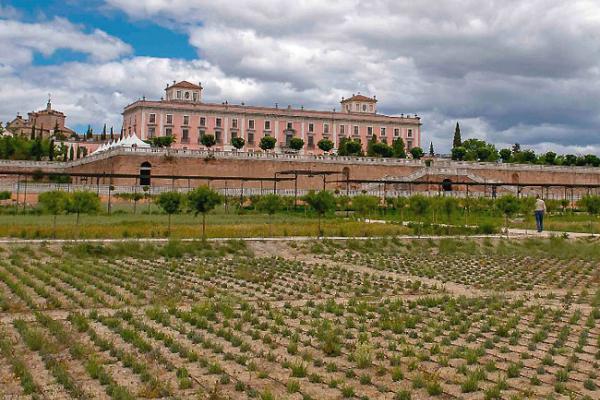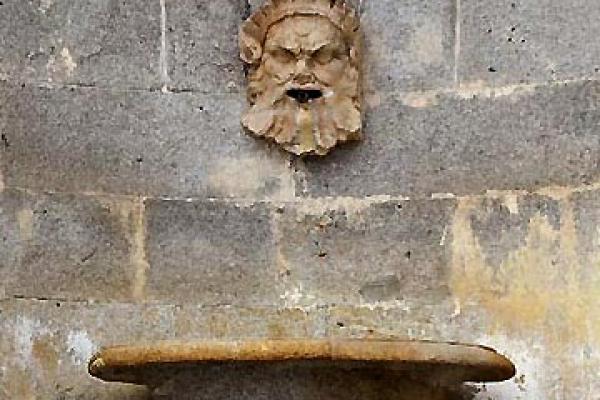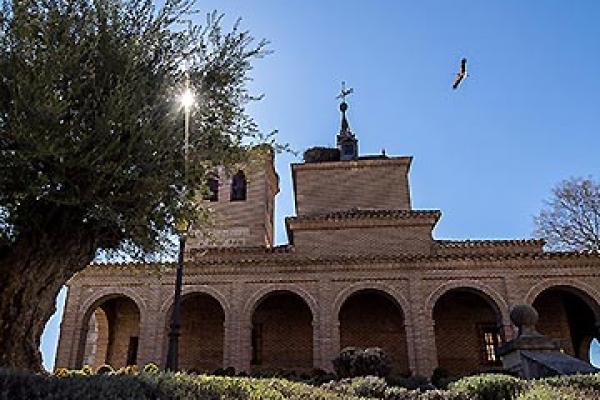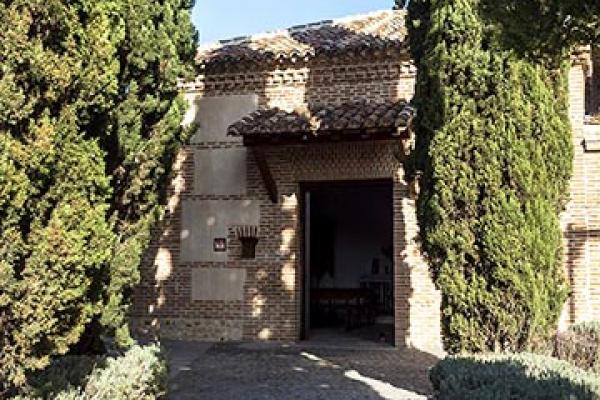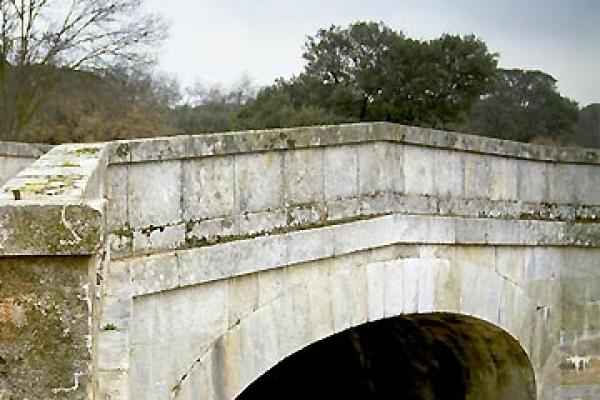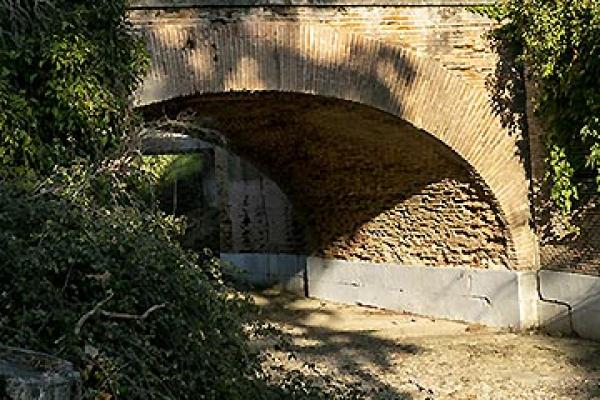Itinerary: Loop Route in the Monte Sur. From the Arroyo de la Fresneda area you climb to the Montepríncipe housing development, the highest point on the route, before returning on the Vereda del Alajillo trail to the Casa de la Buena Vista, and back to the start of the trail.
Highlights: Mediterranean forest, dehesa forested pastures, riverside vegetation, sustainability
Length: 5 km.
Approximate duration:on foot 2h, bicycle 1h
Elevation: 663-801 MASL.
Average : 2.5 - 3%
Maximum: 13.5%
Accessibility: 1.5 km section accessible by People with Reduced Mobility: Arroyo de la Fresneda. Dirt roads and gentle slopes on the ascent to Montepríncipe
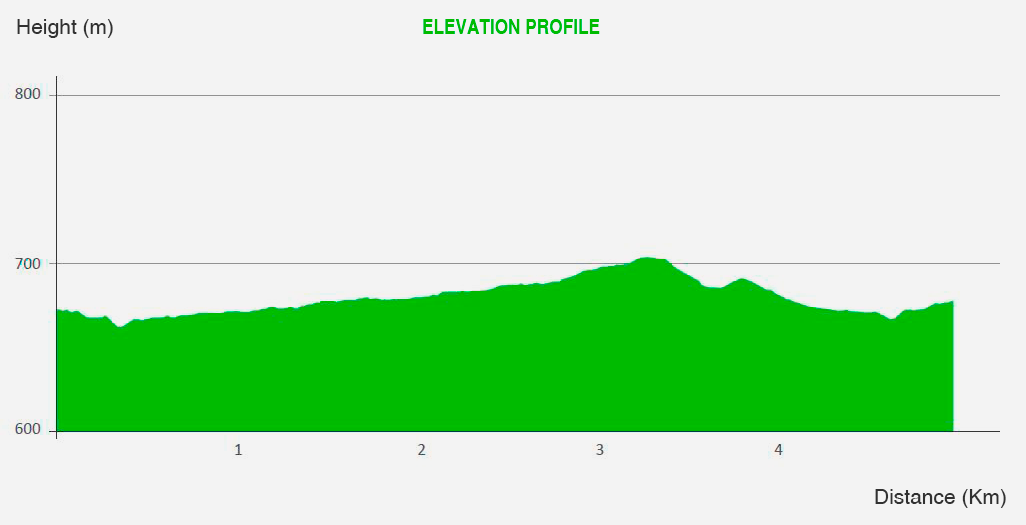
The flora route could have been traced along many of the paths and trails that run through the Monte de Boadilla, as the plant formations that will be mentioned are found throughout this natural area.
The particularity this path offers is the opportunity to appreciate the changes in vegetation occurring on a trail that runs from flat areas, featuring meadows, streams and thalwegs, towards the hills above, where oak groves prevail.
The route starts across from the Aula Ambiental de Boadilla (Environmental Classroom) and heads for the Avenida Adolfo Suárez, towards the Boadilla-Pozuelo highway (M513) from where, following the bike path, you can take one of two routes that run along the edge of the Arroyo de la Fresneda area and converge at the same wooden bridge spanning the streambed, located at 1 km. The route along the left bank travels the mixed-use path for pedestrians and bicycles, is further away from the bank, and crosses the dehesa (wooded pasture), dotted with ash trees. If you opt for the right side of the route you will enjoy the Senda del Arroyo de la Fresneda whose characteristics are covered more extensively in this guide.
In the Arroyo de la Fresneda area riverbank vegetation prevails, its presence denoting the importance of groundwater for the maintenance of these ecosystems. While the Arroyo is a streambed carrying water only during periods of rain, the vegetation observed here reveals the presence of groundwater, an essential resource for the maintenance of this ecosystem, as a channeled streambed.
In the streamside forests the vegetation grows symmetrically along the bed, depending on its hydric needs. Thus, species that are closer to the streambed need cooler and more humid soil, such as the willow (Salix spp.) As we move away from the bed, species appear that need less and less water, like the poplar, the ash, the elm, and, finally, the holm oak, a species adapted to the major temperature differences and scarcity of water in the area.
The willow is a species that may take the form of a bush, or a tree, and is one of the most widely distributed genuses in the Iberian Peninsula associated with water courses. In the Arroyo de la Fresneda area we can find the Salix atrocinerea, or grey willow, and the Salix fragilis, or crack willow, whose wood has been put to different uses in crafts, due its slender, supple stems, and as medicine. The ease with which the genus Salix tends to hybridize often hampers identification of the species.
Along with the willows, as indicators of good water quality, there should be alders (Alnus glutinosa), but the poor state of most of the rivers and streams in the middle and lower water courses in the Community of Madrid limits its presence. A little farther from the streambed there appear poplars (Populus sp.), a fast-growing species that needs moist soils to develop, and that frequently grows on floodplains, forming poplar groves. In Arroyo de la Fresneda there is a single white poplar (Populus alba), small in size, but large ones can be found in the Parque Juan Pablo II, created downstream, by the fairgrounds. Poplars once flanked the entrance to Boadilla, along the old Camino de Madrid. This species can reach heights of 15-20 m, and has been traditionally used to produce paper pulp.
The tree vegetation along the bank is accompanied by a border of shrubs, on which a great variety of birds and insects feed. This shrubbery includes the hawthorn (Crataegus monogyna), elmleaf blackberry (Rubus ulmifolius) and the dog rose (Rosa canina), three species characteristic of what have been called "thorny hedges", which in rural areas still demarcate properties, forming live hedges of great interest for the conversation of biodiversity.
Upon reaching the wooden bridge spanning the streambed, the path deviates 100 meters, drawing one's attention to the ducks and geese in the pond created for this purpose. The plant environment created for them features a wide range of shrubs and herbaceous plants typical of the Mediterranean ecosystem: dog rose (Rosa canina), honeysuckle (Lonicera peryclymenum), reeds (Scirphus holoschoenus), blackthorn (Prunus spinosa), wild jasmine (Jasminum fruticans), broom (Cytisus scioparius), grey-leaved cistus (Cistus albidus), sage-leaved rock rose (Cistus salvifolius), flax-leaved daphie (Daphne gnidium), tamarisk (Tamarix gallica) and lentisk (Pistacia lentiscus).





